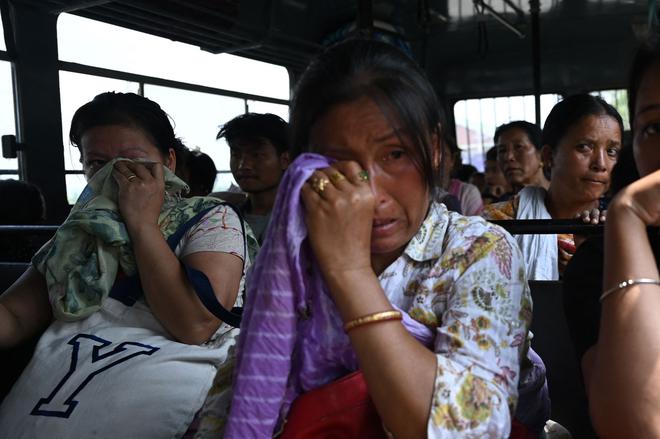(This is the latest edition of the Political Line newsletter curated by Varghese K. George. The Political Line newsletter is India’s political landscape explained every week. You can subscribe here to get the newsletter in your inbox every Friday.)
Big Picture
Through the Bharatiya Janata Party’s (BJP’s) hectic Karnataka election campaign, the State unit has come through emaciated. The party’s internal machinery works in a way that puts all credit of victory in the hands of the central leadership but pins the onus of defeat on the State unit.
National leaders of the BJP and Congress do not like strong regional leaders. Before Narendra Modi emerged as the unquestionable supremo of the BJP in 2014, he was one of the several State-level leaders of the party. Without effective regional leaders, national parties cannot operate in States, but strong regional leaders can challenge national leaders. Mr. Modi and his close associate, Amit Shah know that all too well, as their journey to the top was hardly uncontested within the BJP. Strong regional leaders can outwit national leaders who often can’t manage the grassroots directly. Mr. Modi successfully resisted an attempt by A.B. Vajpayee to remove him from the post of Gujarat Chief Minister (CM) in 2003; last year, Rajasthan CM Ashok Gehlot outsmarted the party high command and held on to his post.
The Congress party’s current weakness is partly explained by its characteristic reluctance to accommodate or encourage regional heavyweights. The party is relatively stronger in places where strong leadership emerges: Andhra Pradesh earlier, and now Karnataka are examples. But given a choice, the high command would rather allow the party to wilt than tolerate a strong leader, as it did in Andhra Pradesh by forcing Jagan Mohan Reddy to leave the party and create his own regional party.
Unlike the Congress’ high command, the BJP central leadership used to be diffused, allowing several second and third rung leaders to jostle among themselves, and prove their mettle. There were various power centres in the Sangh Parivar. Now, the BJP’s leadership is highly centralised, and the RSS itself has far less clout overall in the power structure.
Having clipped the wings of B.S. Yeddyurappa, who till date remains the most popular leader of the party in Karnataka, the BJP is likely to replicate the same model in three States that will go to the polls later this year: Madhya Pradesh where it is in power, and Rajasthan and Chhattisgarh where it is fighting to return to power by beating the incumbent Congress.
The party is unlikely to let any one person at the State level be the face of its campaign in these States, though in Madhya Pradesh, being the sitting Chief Minister, Shivraj Singh Chouhan may remain central. In Rajasthan, former CM Vasundhara Raje is keen to return as the declared CM face. Failure to achieve that might turn her indifferent or even hostile to the party. The BJP went on an overdrive to mollify Mr. Yeddyurappa in Karnataka, but no such attempt is apparent in Rajasthan.
In two States, however, strong leaders have emerged in the BJP. In Uttar Pradesh, Chief Minister Yogi Adityanath now has popular appeal independent of the party; in Assam, CM Himanta Biswa Sarma has the State’s politics so under his control that the party would find it difficult without him. Both Mr. Adityanath and Mr. Sarma are speculated to be future PMs.
Mr. Modi and Mr. Shah like the current arrangement in which all power originates from them, but the necessity of leadership at the State level cannot be overstated for their own plans. The BJP’s plans to capture power in West Bengal in 2021 did not quite take off as it does not have local leadership. For grand narratives to work well, they must be in tune with ground realities. That is the Big Picture.
Federalism Tract: Notes on managing Indian diversity

Demographic root of Manipur conflict
A demographic imbalance across communities and regions is at the heart of the conflict in Manipur. The BJP government in the State is trying to politically profiteer from these imbalances, aggravating the conflict. The stability and territorial integrity of a society such as Manipur can be secured only by genuine recognition and substantive accommodation of territorial rights and identities, this piece argues.
SC curtails Centre’s imperial ambitions
The SC rejected the Centre’s argument that it had unlimited power over the elected government in Delhi. The Centre cited national interests to defend its claim but the court rejected the argument.
Stalin hails Dravidian ideology
DMK president and Tamil Nadu Chief Minister M.K. Stalin last Sunday said the Dravidian ideology was not outdated, but it had rendered Sanathana dharma, Varnashrama, Manu Needhi, humiliation in the name of caste and suppression of women outdated.
!["[T]he First and Fifth Amendments Require ICE to Provide Information About the Whereabouts of a Detained Person"](https://images.inkl.com/s3/publisher/cover/212/reason-cover.png?w=600)






